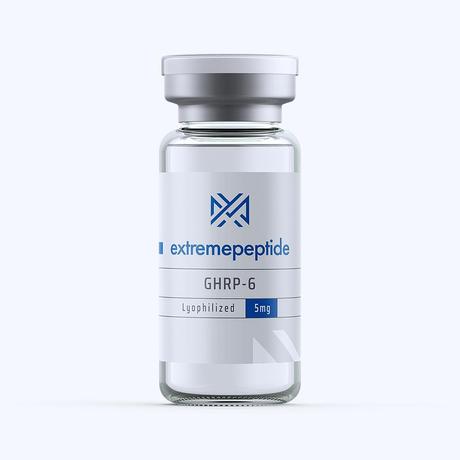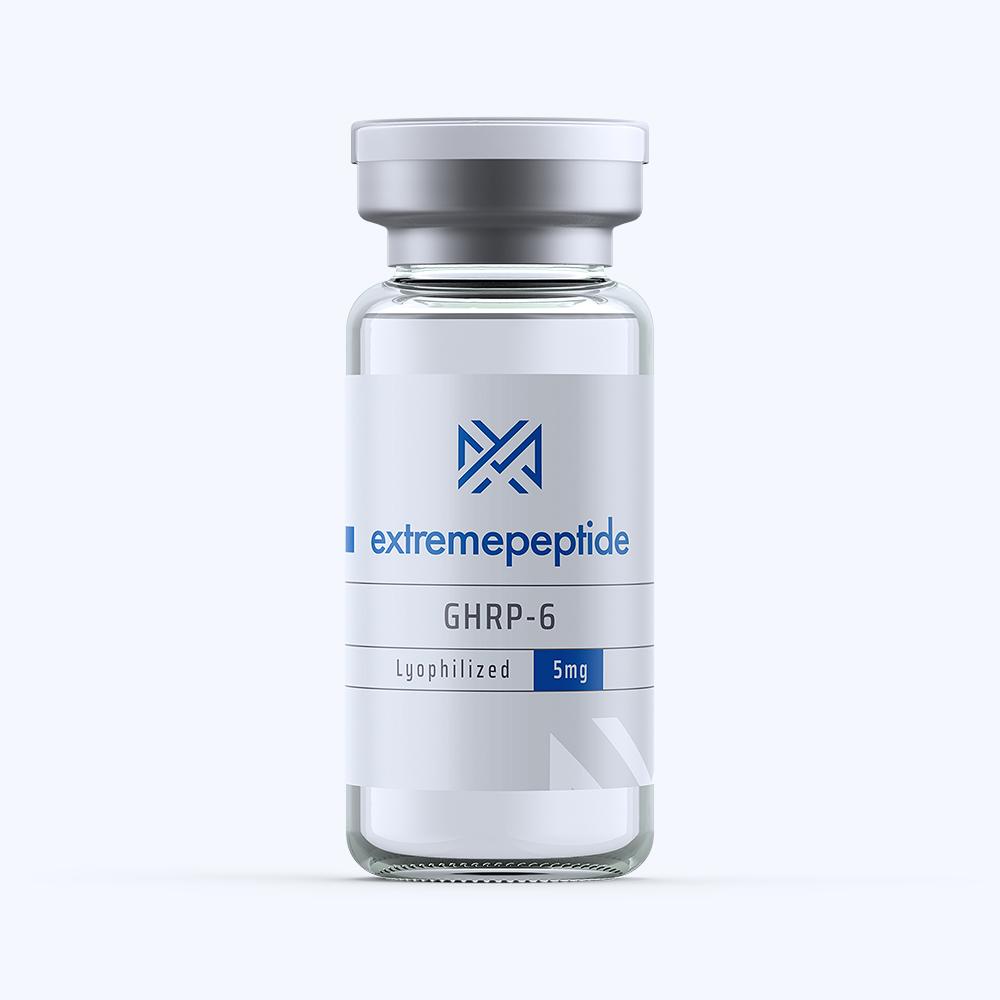Sale!


GHRP-6
In stock
$28.99$36.99
- Concentration
- 5 mg per vial
Free & Fast
Shipping
Earn
Rewards
Excellent
Service

$28.99$36.99
Free & Fast
Shipping
Earn
Rewards
Excellent
Service
| Property | Value |
|---|---|
| Molecular Formula | C46H56N12O6 |
| Molecular Weight | 873.0 |
| Monoisotopic Mass | 872.44457755 |
| Polar Area | 301 |
| Complexity | 1570 |
| XLogP | 1.9 |
| Heavy Atom Count | 64 |
| Hydrogen Bond Donor Count | 11 |
| Hydrogen Bond Acceptor Count | 9 |
| Rotatable Bond Count | 23 |
| Physical Appearance | Fine White Lyophilized Powder |
| Stability | Lyophilized protein is to be stored at -20°C. It is recommended to aliquot the reconstituted (dissolved) protein into several discrete vials in order to avoid repeated freezing and thawing. Reconstituted protein can be stored at 4°C |
| PubChem LCSS | GHRP-6 Laboratory Chemical Safety Summary |
| Property | Property Value |
|---|---|
| CID | 9919153 |
| CAS | 87616-84-0 |
| InChI | InChI=1S/C46H56N12O6/c1-27(54-44(62)39(20-29-23-51-35-15-7-5-13-32(29)35)57-43(61)34(48)22-31-25-50-26-53-31)42(60)56-40(21-30-24-52-36-16-8-6-14-33(30)36)46(64)58-38(19-28-11-3-2-4-12-28)45(63)55-37(41(49)59)17-9-10-18-47/h2-8, 11-16, 23-27, 34, 37-40, 51-52H, 9-10, 17-22, 47-48H2, 1H3, (H2, 49, 59)(H, 50, 53)(H, 54, 62)(H, 55, 63)(H, 56, 60)(H, 57, 61)(H, 58, 64)/t27-, 34-, 37-, 38+, 39+, 40-/m0/s1 |
| InChIKey | WZHKXNSOCOQYQX-FUAFALNISA-N |
| Isomeric SMILES | C[C@@H](C(=O)N[C@@H](CC1=CNC2=CC=CC=C21)C(=O)N[C@H](CC3=CC=CC=C3)C(=O)N[C@@H](CCCCN)C(=O)N)NC(=O)[C@@H](CC4=CNC5=CC=CC=C54)NC(=O)[C@H](CC6=CN=CN6)N |
| Canonical SMILES | CC(C(=O)NC(CC1=CNC2=CC=CC=C21)C(=O)NC(CC3=CC=CC=C3)C(=O)NC(CCCCN)C(=O)N)NC(=O)C(CC4=CNC5=CC=CC=C54)NC(=O)C(CC6=CN=CN6)N |
| IUPAC Name | (2S)-6-amino-2-[[(2R)-2-[[(2S)-2-[[(2S)-2-[[(2R)-2-[[(2S)-2-amino-3-(1H-imidazol-5-yl)propanoyl]amino]-3-(1H-indol-3-yl)propanoyl]amino]propanoyl]amino]-3-(1H-indol-3-yl)propanoyl]amino]-3-phenylpropanoyl]amino]hexanamide |
Generated by Extreme Peptide with Open Babel, version 2.3.1, http://openbabel.org (accessed April 20, 2025)
Accurate research is our priority.
Get 25% off your first order and all the latest information on events, sales, & offers.

